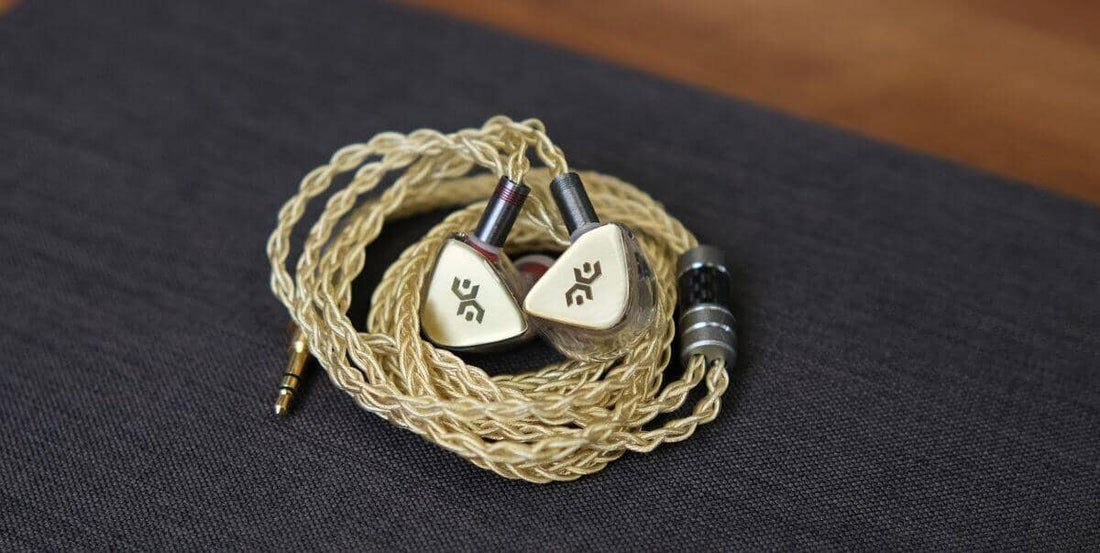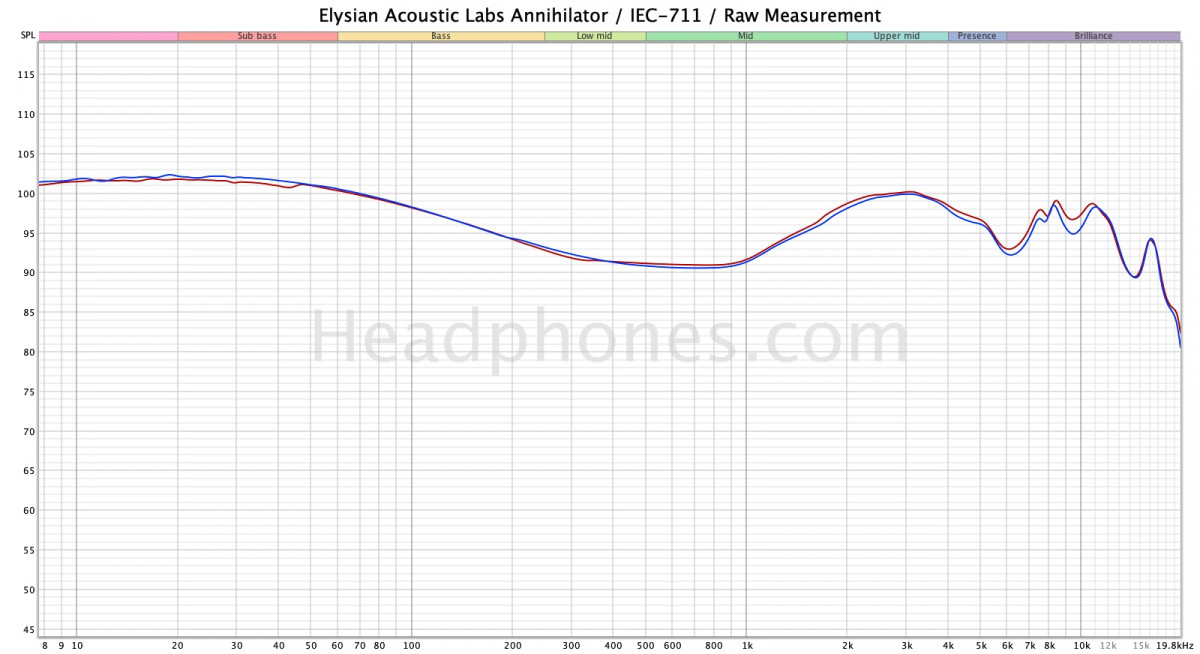Elysian Annihilator Review - The Best IEM You’ve Never Heard

Review written by @Precogvision
Introduction - Elysian Annihilator Review
Elysian Acoustic Labs is a brand that I imagine most readers will not be acquainted with. Hailing from Malaysia, it’s a one-man team headed by Lee Quan Min. The brand’s crown jewel is the Annihilator, a tribrid IEM that’ll set you back roughly $3000 USD for the universal and $3700 USD for the CIEM. Yeah, not cheap. And obscure too, helped in no part by a limited ordering process and a flood which shut down production altogether for some time. Nonetheless, the IEM has steadily made rounds via word-of-mouth in core communities lucky enough to hear it, with many listeners claiming it to be the best IEM they’ve heard. Such a claim is nothing new; after all, I see similar claims on a regular basis. But considering said claims are coming from some of the most hardened, jaded audiophiles on the planet? That’s really something.
Sadly, I’d mostly given up hope of ever hearing the Annihilator. But then out of the blue, a Redditor who’d sent me another IEM for review casually mentioned that he’d included a surprise. Namely, the Annihilator. “What?!” was my reaction. I said this IEM was obscure. And to illustrate, to my knowledge, I’m the lone man in the USA who’s heard an Annihilator! Well, I was, and no longer am, because I brought it over to Super*Review for him to hear it too. But that's enough chit-chat. From the title of my review, you already know this IEM is good stuff. Now let’s talk just how good.
This unit was provided for review by a generous Redditor. At the end of the review period, it will be returned. As usual, what follows are my honest thoughts and opinions to the best of my ability. The Annihilator may be purchased via Zeppelin & Co in Singapore, Star Picker Audio Library in Malaysia, and via PM for international orders.
Source & Driveability
Critical listening was done off of a variety of sources including an iBasso DX160 , iBasso DX300 , and A&K SE200 with lossless FLAC files. I utilized the stock cable and SpinFit CP155 tips. The Annihilator is a considerably difficult IEM to drive (at least relative to other IEMs); however, this is for good reason. The Sonion EST drivers are notoriously insensitive, and proper implementation requires that the other drivers be dampened so as to match the ESTs’ lower sensitivity. Nonetheless, I had no trouble driving the Annihilator off of any of my sources.

The Tangibles
I received the Annihilator inside a Pelican 1011 case and nothing more. Although this can’t be considered representative of what you’ll actually get, I’d imagine that you won’t receive much more if you purchase directly from the maker. The Annihilator is a tribrid IEM that sports a Foster DD for the bass, 4x BAs for the midrange, and 2x Sonion ESTs for the treble. It is constructed of clear resin, affording a view of the components inside, with a gold, holographic faceplate emblazoned with the brand’s logo. I did find the Annihilator somewhat uncomfortable to wear for prolonged listening, as it utilizes a larger shell to accommodate the plethora of unique technologies packed inside.
The Annihilator’s cable system is different from the standard 2-pin or MMCX connector system that most IEMs use. It uses Pentaconn Ear connectors which consist of a single point of entry and are plug-and-play. They work well, although buyers should beware if they’re planning to swap out the Annihilator’s cable because this connector is not used widely. Speaking of cable upgrades, Lee also offers an alternative version of the Annihilator, the Dio, with a cable called “The World”. This is a reference to Jo-Jo’s Bizarre Adventure for those who might not be well-versed in weeb talk. Please give us more of this, Lee.
Sound Analysis
You were wondering how good the Annihilator sounds. In short, it sounds freaking amazing and (mostly) lives up the hype that surrounds it. The Annihilator falls under what I would most closely call a bright V-shape tuning. It is an aggressive, in-your-face listen that toes the line, but never quite gets outright fatiguing to my ears.

Surprisingly, though, the Annihilator’s Foster dynamic driver bass isn’t really a selling point to my ears. It has been tuned for a mid-bass emphasis and goes for quick punch above all else, lending to considerable “wow” factor on first listen; I know it grabbed my attention. But here’s the problem: It’s overcompensating. Along these lines, the Annihilator’s bass sounds dry. Almost static, really, in a compressed fashion that I’ve too often associated with cheaper DD offerings. The Annihilator may have won a competition in Japan for the best implementation of this driver; unfortunately, it doesn’t change the fact that the driver is fundamentally flawed from the outset. Constant driver flex is another bane to what would otherwise be a near-perfect hybrid. So ultimately, even though it’s unmistakably DD bass, it’s nothing more than adequate and squeaks by with passing marks to my ears.
But strap-in because it’s a wild ride (don’t worry, the fun kind) from here. The midrange of the Annihilator is characterized by a flat lower-midrange and then an aggressive rise to the pinna compensation and upper-midrange. This type of tuning philosophy is not uncommon with many Chi-Fi IEMs, and yet, the Annihilator’s sheer midrange clarity cannot be understated. It presents female vocals upfront without ever quite delving into shoutiness, something that cannot be said for most Chi-Fi tunings I’ve heard. Some might still note a slightly “digital” edge to the way the Annihilator’s midrange is presented; this is in the sense that it sounds hyper-boosted and not quite tonally correct. But you won’t hear me complaining, because it’s a small price to pay for what just might be the cleanest midrange I’ve heard amongst IEMs.
And we haven’t even gotten to the best part of the Annihilator: the EST treble. Funnily enough, I don’t really like the much-hyped Sonion ESTs. Even on IEMs with “correct” implementations of the ESTs that I’ve heard, I can only describe them as sounding quite soft, brushed in speed, and lacking in microdynamics. You know, just the complete opposite of what a real electrostatic should sound like! But as another reviewer (namely Crinacle) might say, the Annihilator is an exception. The exception, that makes clear that the driver is capable of so much more.
This is the quickest treble response I’ve heard on an IEM (minus the Shure KSE1500, the world’s only true electrostatic IEM). The Annihilator showed no signs of duress even when pressed by the treble rollercoaster that is Girls Generation’s “Into the New World,” catching every little sparkle, synth effect, and hit in the backdrop. Heck, the initial edge of the Annihilator’s treble almost seems to flit out thin air; I suspect that this perception is aided by a minor recession at around 6kHz. Besides lending to this interesting quality, I almost think that this dip is necessary because the Annihilator has quite a lot of treble. The distinction? The Annihilator has largely linear treble up to the limits of my hearing; it’s not even fatiguing. Extension, speed, and detail, the Annihilator is a zenith for treble. It’s still not going to match the Sony IER-Z1R’s world-class transient hardness and reverb, but it easily competes as a whole; there can be no shame in that.
Pictured below, the Annihilator with SpinFit's soon-to-be-released CP100+ tips:

Technical Performance
You thought I was done hyping this IEM up? On the contrary, far from it. I still recall thinking to myself, “Dang, this thing is resolving,” when I first heard the Annihilator. A short while later, I was asking myself an entirely different question: “Is this the most resolving IEM I’ve heard?”. The qdc Anole VX, the Empire Ears Odin, the 64 Audio U12t, name any of the heavy-hitters in the IEM world. The Annihilator is at the very least on par with these IEMs for detail retrieval and clarity. Seriously.
Again, I cannot emphasize the importance of its class-leading treble reproduction. Our ears are inherently more receptive to higher-pitched sounds. The speed of the Annihilator’s ESTs means that it picks up any and every treble minutiae in a track; in tandem with its sheer treble quantity, the perception of detail is boosted. Furthermore, in real-life, we are accustomed to treble air frequencies resonating in a given room. When an IEM is able to reproduce air and reverb trails to a considerable extent, our perception of the “stage” that is created by an IEM - so imaging - benefits.
Like so, the Annihilator’s imaging impresses with equal parts soundstage width and layering ability. Listening to Sawano Hiroyuki’s new album, IV, I found myself drawn to the track “FAVE” in particular. There is a series of quick drum hits in the back left-right channels at 0:12, and they ring incredibly sonic-wall free on the Annihilator. For soundstage height and depth, I would say the Annihilator falls within the realm of “great,” but decidedly not best-in-class. The Sony IER-Z1R has better soundstage height, and the 64 Audio U12t has better soundstage depth with its speaker-like center image. Still, every instrument presented on the Annihilator’s stage has a well-defined “compartment” with an excellent sense of incision and space in-between. For more latent intangibles, macrodynamics on the Annihilator are generally uncompressed with a strong sense of physicality and rawness; you’ll hear no complaints from me on this front.
Unforgiving Explication
Here’s where the Annihilator’s no exception: It’s not perfect. There’s probably a sizable demographic of listeners who will dislike the Annihilator, from the outset, on the basis of tonal preference. Again, this is quite the bright and forward IEM; some listeners might find it fatiguing despite it being tuned well.
Let’s also talk about coherency, the pitfall of any hybrid IEM. The Annihilator’s an unusual case. While I can certainly tell which drivers are tokening what frequencies, if there’s one benefit to the otherwise middling Foster driver being used, it would be its speed. This helps to offset some of the perception of the highly-defined midrange and treble being more resolving. Now the bad part. Generally speaking, there is a lack of “weight” or density to the Annihilator’s transients. The speed of said transients simply flies by on the Annihilator, to the point of which I think it can sound overly raw. I cannot deny that this quality befits the IEM’s name; however, it does lend itself to a less than refined presentation at times.

The Verdict
In my short time in this hobby, I’ve been lucky enough to hear 100+ IEMs (subtle flex, I know). Of those 100+ IEMs, there are roughly five that I consider top-tier IEMs; IEMs that stand at the portable audio summit. Then, of those five, there are less than three that I think merit “best in the world” status. The Annihilator is part of that exclusive club. Now, as a rule of thumb, I generally refrain from recommending multi-kilobuck IEMs; the Annihilator won’t be bucking that trend. But it’s for a different reason entirely. Lee tells me that the company’s new flagship named “X” - in honor of being the company’s tenth IEM - has just been released! It promises to improve upon the Annihilator’s weaknesses and more; hopefully, I’ll be getting one in for evaluation soon to confirm whether this is the case or not.
More than anything, then, I think the Annihilator is a testament to innovation and perseverance. Lee’s earlier models actually weren’t received as well from what I understand, and it wasn’t until the Annihilator was released that people got talking. That a one-man-team can come in and effectively show-up the rest of the industry is the beauty of this hobby. And even more ridiculous? More than a year after its release, the Annihilator remains the best EST implementation I’ve heard by a good margin. Established brands better step up their game lest they wish to be annihilated by upstart brands like Elysian Acoustic Labs.
Reference Tracks
-
Aimer - Hakuchuumu
-
David Nail - Let It Rain
-
Everglow - DUN DUN
-
Girls Generation - Galaxy Supernova
-
Illenium - Broken Ones
-
Joe Nichols - Sunny and 75
-
Keith Urban - Defying Gravity (2009)
-
Keiichi Okabe - Weight of the World (NieR:Automata Original Soundtrack)
-
Sabai - Million Days
-
Sawano Hiroyuki - Best of Vocal Works Remastered (2020)
-
Taeyeon - My Voice (2017)
-
Tiffany - I Just Wanna Dance
---
Discuss the Elysian Annihilator on the HEADPHONE Community Forum.
---
